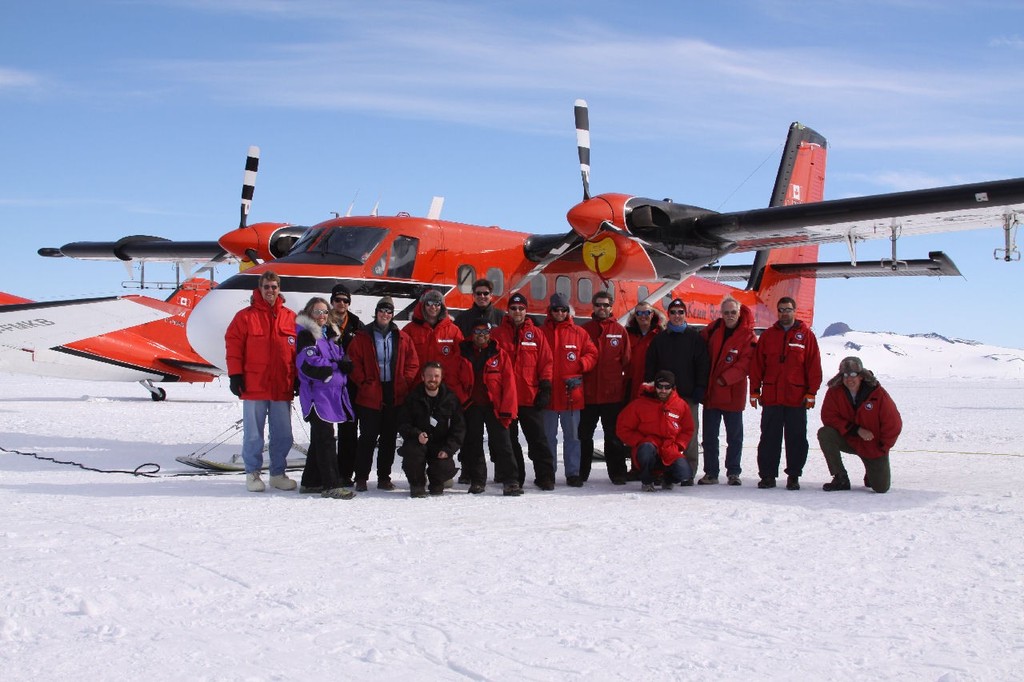New discovery from Antarctica’s ‘ghost mountains’
by British Antarctic Survey and Lamont-Doherty Observ on 7 Mar 2011

AGAP team British Antarctic Survey
http://www.antarctica.ac.uk
The discovery of numerous large ice structures within Antarctica’s Dome A region, the site of the buried ‘ghost mountains’, reveals new understanding about ice sheet growth and movement that is essential for predicting how the ice sheet may change as the Earth’s climate warms.
Reporting this week in the journal Science a six-nation group of scientists studying the Gamburtsev Subglacial Mountains describe how these remarkable structures form. Typically ice sheets grow when layers of snow are deposited on the surface, but the researchers found startling new evidence of growth at the base. Widespread re-freezing of large volumes of water to the underside of the ice sheet modifies its structure. In some places this process can account for up to half the ice sheet’s thickness, and the growth caused by refreezing may be comparable to that occurring at the surface.
The enigmatic Gamburtsev Subglacial Mountains lie buried beneath as much as 3 km (two and a half miles) of ice. An international team mounted an ambitious field campaign to investigate the ice sheet and what lies beneath during the International Polar Year (2007-09).
Lead Author, Dr Robin Bell of Columbia University’s Lamont-Doherty Earth Observatory says, 'We usually think of ice sheets like cakes - one layer at a time added from the top. This is like someone injected a layer of frosting at the bottom - a really thick layer. Water has always been known to be important to ice sheet dynamics, but mostly as a lubricant. As ice sheets change, we want to predict how they will change. Our results show that models must include water beneath.'
Co-Author Dr Fausto Ferraccioli, from British Antarctic Survey says, 'This International Polar Year study provides a unique view on the interactions between subglacial water and ice sheet structure in East Antarctica. Understanding these interactions is critical for the search for the oldest ice and also to better comprehend subglacial environments and ice sheet dynamics. Incorporating these processes into models will enable more accurate predictions of ice sheet response to global warming and its impact on future sea-level rise'.
The refrozen structures form because the vast Antarctic ice sheet acts like blanket trapping geothermal heat from the Earth beneath. This heat, combined with the great pressure from the overlying ice allows ice to melt at the base. When under the ice this water can be pushed uphill, towards mountain ridges where the ice sheet is thinner. This thinner and colder ice refreezes the water, creating the spectacular structures observed close to the base of the ice sheet.
The researchers theorize that this process explains the re-frozen structures appearing at the heads of valleys beneath the ice sheet. This new ice at the base pushes older ice closer to the surface, making the ancient layered record of climate embedded in the ice easier for researchers to reach.
Bell continues, 'When we first saw these [refrozen] ice structures in the field, we thought they looked like beehives and were worried they were an error in the data. As they were seen on many lines, it became clear that they were real. We did not think that water moving through ancient river valleys beneath more than one mile of ice would alter the basic structure of the ice sheet.'
The refrozen ice accounts for up to 24% of the area of the ice sheet base around Dome A, the top of the East Antarctic ice sheet. The scientists suggest that this process has been going on since East Antarctica became encased in a large ice sheet 32 million years ago. Researchers now will now look into how refreezing affects the margins of the Antarctic and Greenland ice sheets, where the most rapid change is occurring.





